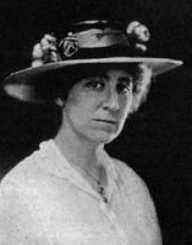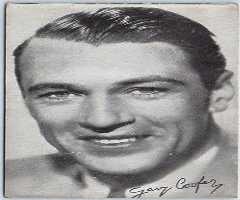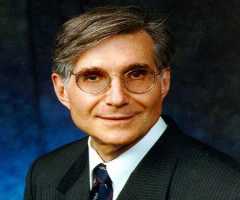Jeannette Rankin Biography, Life, Interesting Facts

Birthday :
Died On :
Also Known For :
Birth Place :
Missoula, Montana, United States of America
Zodiac Sign :
Jeannette Rankin was a Republican who made history after becoming the first woman in the United States to win a political seat. She contested in the State of Montana and was elected to the House of Representatives in 1916. During this period, women participation in politics was uncommon; Rankin started by campaigning for Women Suffrage Movement. She worked tirelessly until Nineteenth Amendment was passed allowing women to vote across America.
Rankin was opposed to the entry of the United States to the World War 1 and World War 2. The Pacifism approach that she had on foreign matters attracted applause and criticism in equal measure. She was the only member of Congress who voted against the participation of United States in the World War 2. Her policy of appeasing the world at every opportunity available was ridiculed by many people in the United States. She, however, also earned admiration from women and activists for this policy.

Childhood And Early Life
Jeannette Rankin was born on June 11, 1880, in Montana. Her parents were Olive Pickering, a school teacher, and John Ranking who was a Scottish-Canadian immigrant and worked as a carpenter and a rancher. Rankin was the first born in a family of six children, five girls, and one boy. One of her sisters passed on in childhood while her brother, Wellington became the Attorney General of the State.
Rankin was brought up in Montana, and as a teenager, she helped in taking care of her younger siblings and daily farm chores. She was a hardworking young girl who at one point built a wooden sidewalk for her father's building. She also helped in maintaining ranch machinery.
Who was Jeannette Rankin? What job did Jeannette Rankin do? What is Jeannette Rankin known for?
She was an American politician and women’s rights advocate.
When was Jeannette Rankin born?
She was born on 11th June, 1880.
Where was Jeannette Rankin born?
She was born in Missoula County, Montana, United States.
Was Jeannette Rankin poor when she was a little child?
No. She was born in a middle class family.
How many siblings did Jeannette Rankin have?
Jeannette Rankin had six siblings.
When did Jeannette Rankin graduate? Which year did Jeannette Rankin graduate? Which school did Jeannette Rankin go to?
She graduated in 1902 from University of Montana.
How to pronounce Jeannette Rankin?
It is pronounced as Jean-nette Rankin.

Education
Jeannette Rankin attended high school and graduated in 1898. She then joined the University of Montana in 1899 where she did a Bachelor of Science degree in Biology. She graduated in 1902 and started dressmaking in Missoula. Rankin later worked as a furniture designer in Boston.
She enrolled at the New York School of Philanthropy and later Columbia University School of Social Work for the period between 1908 and 1909. The enrollment came after she realized herself as a social worker.
When she was 28 years, Rankin attended the University of Washington where she was involved in the women's suffrage movement.
Career
Jeannette Rankin started off in different professions including social work, dressmaking, and furniture designing. She, however, realized herself as a social worker in 1908 and did several courses to help her work towards her passion.
She was involved in women's suffrage at the University of Washington and aided in the organizing of the New York Women's Suffrage party. She actively lobbied for the National American Women Suffrage Association. Her efforts bore fruits in 1910 as Washington voters approved a change to the constitution giving a permanent right for women to vote.
Where did Jeannette Rankin work? Why is Jeannette Rankin important in Congress?
She was the first woman to work in federal office in the United States.
When was Jeannette Rankin elected to Congress? In which year was Jeannette Rankin elected as the first woman in Congress? When did Jeannette Rankin become Congresswoman?
She was elected in 1916 and was the first woman to serve in the congress.
Who was the president when Jeannette Rankin was elected into Congress?
President Woodrow Wilson was the president when Jeannette Rankin was elected into Congress.

How long did Jeannette Rankin serve?
She served from 1911 to 1942 (31 years).
How long did Jeannette Rankin hold office each time she was elected into Congress?
She held office for two years.
When did Jeannette Rankin oppose World War 1?
She opposed the World War in 1917.
When did Jeannette Rankin serve in Congress?
She served from 1917-19 and 1941-43.
Why did Jeannette Rankin vote against the war?
Rankin was a committed Pacifist. So she was against war.
When did Jeannette Rankin speak before the Montana legislature?
She spoke in the Montana legislature in 1916 and again in 1940.
In 1911, Jeannette Rankin directed her efforts to the Montana Legislature. She became the first woman to speak before the Montana Legislature. She actively petitioned the members to pass an amendment to give women a right to vote. As a result of her efforts, Montana made changes that allowed women unrestricted right to vote.
In 1916, Rankin started her political career where she ran for a seat in the United States House of Representative. She won the general elections making history as the first woman to serve in the Congress. In the House of Congress, Rankin brought forward her belief of pacifism and defended it one-heartedly. In April, the House was recalled to discuss whether the United States was to participate in the World War waged by Germany. She debated and openly voted against joining the war. 49 other members supported her.
What did Jeannette Rankin do after the attack on Pearl Harbor?What did Jeannette Rankin do on December 8, 1941?
She voted against war on Japan after the attack on Pearl Harbor.
When did Jeannette Rankin vote ‘no’ for the Vietnam War?
In 1968, when Jeanette Rankin was 87 years
Which are some places Jeannette Rankin traveled to?
She regularly traveled to many places like New Zealand, Russia, Ireland, South Africa and Turkey.
Jeannette Rankin continued with her fight to disenfranchise all women in the United States. By 1918, she had succeeded in granting women in forty States their right to vote. In 1919, Rankin's biggest breakthrough, in her lobby to ensure all women vote, when the United States Congress passed an amendment granting women their right to vote.
Her term at the Congress ended in 1919, and she now focused her energy on social work and pacifism. She joined International League for Peace and Freedom after attending a peace conference in Switzerland.
In 1920's, Ranking lobbied the Congress to ban child labor and pass Sheppard-Towner Act. By then, she was serving as a field secretary in the National Consumers League.
In 1928, she formed the Georgia Peace Society to advocate for the prevention of war. She also became a speaker in the National Council for the Prevention of War.
In 1940, Rankin went back to politics as a result of a war crisis. She made her way back to the House of Representative and was appointed to the Committee on Public Lands as well as the Committee on Insular.
Once again, Jeannette Rankin became the only member of the House of Representative to vote against the participation of the United States in World War 2. The media and majority of the people in the United States criticized her, but she remained adamant. She retired from active politics in 1942.
What did Jeannette Rankin do for women? How did Jeannette Rankin change the world?
She gave women nationwide right to vote.
How did Jeannette Rankin show selflessness?
Jeanette Rankin was a leader in the women‘s suffrage movement and a great pacifist.
How did actions of Jeannette Rankin impact people?
Her extraordinary achievements and political influence impacted the people.
What effect did Jeannette Rankin have on American women?
She inspired other women to enter politics.
Did Jeannette Rankin know what she wanted to do in the future?
She wanted to become a Social worker.
What did Jeannette Rankin do after she retired?
After retiring from politics, she focused on social work and Pacifism.
What did Jeannette Rankin enjoy doing?
Jeannette Rankin enjoyed doing social work.
Major Works
Jeannette Ranking worked tirelessly to ensure that women were granted full rights to vote. She was instrumental in the amendment of 19th Amendment that ultimately disenfranchised women in the United States.
She had a high principle of appeasing the world. She courageously voted twice against the participation of the United States in World War.
Why did Jeannette Rankin live in a log cabin in Georgia?
She purchased 44 acres of land in 1933 which was converted into a farm house. A log cabin became her beloved “Shady Grove”.
How long did Jeannette Rankin live for?
She lived for 92 years.
How did Jeannette Rankin die?
Jeannette Rankin had a natural death.
When did Jeannette Rankin die?
She died on 18 May, 1973.
Where was Jeannette Rankin buried?
She was buried at Missoula cemetery, Carmel Valley, Monterey County, California, USA
When was Jeannette Rankin’s courage honored?
After her death at 93, Rankin's courage was honored.
Who sculpted the statue of Jeannette Rankin in the Montana state senate capitol building?
Terry Mimnaugh sculpted the statue of Jeannette Rankin.
How much is Jeannette Rankin foundation scholarship?
$2,000 is given to low income women who must be over 35 years.
Which schools are named after Jeannette Rankin?
Missoula named a new elementary school after Jeanette Rankin.
Personal Life And Legacy
Jeannette Rankin never married. She viewed her mother as a "baby factory" and did not want the same to happen to her. She let down several marriage proposals as she was not interested in dating.
Rankin is remembered for her undying efforts in women suffrage and pacifism. The United States Capitol's Statuary Hall is home to her statue with a message "I Cannot Vote for War."
Jeannette Rankin Quotes
- We're half the people; we should be half the Congress.
- Men are not killed because they get mad at each other. They're killed because one of them has a gun in any dispute.
- As a woman I can't go to war, and I refuse to send anyone else.
- Go! Go! Go! It makes no difference where. Just so you go! go! go! Remember at the first opportunity go.
- If I had my life to live over, I would do it all again, but this time I would be nastier.
- You take people as far as they will go, not as far as you would like them to go.
- When the people have been taught the sensible and civilized manner of settling disputes, they will vote against warfare and we shall have world peace.
- The greatest threat to peace is the barrage of rightist propaganda portraying war as decent, honorable, and patriotic.
- We reasoned that the men would find it difficult to vote against the women in their home states when a woman was sitting with them making laws.
- Bribes are not offered in such a way that you can prove them, and in order to prove that I didn't accept a bribe, I had to run.




















